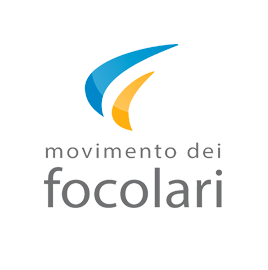Mary was present from the very beginning of Chiara Lubich’s experience. During one of the bombings in the Second World War, in Trent, Chiara felt a special bond with Mary: “The shelter where we were hiding suddenly filled with dust. Completely covered, I got up from the ground, almost miraculously saved. Amid people’s screams, I told my friends, “Just now, when we were in danger, I experienced a sharp stab in my soul — the pain of not being able to recite the Hail Mary here on earth anymore.””[2] It was not yet the time to understand the meaning of that suffering and those words. In 1949, the characteristics of Chiara’s contribution to the Church began to take shape, with greater clarity, in a Marian key:”It seemed to us that the Work that was being born would be nothing more than a mystical presence of Mary in the Church”[3].In 1958 Chiara wrote of her understanding that, as a human being, Mary is close to us, while at the same time her greatness makes her unreachable: “Mary is not understood because she is too close to us. She, who was destined from eternity to bring graces, the divine jewels of her Son, to humanity, is there, near to us, and waits, always hoping for us to notice her gaze and accept her gifts. If any are fortunate enough to understand her, she carries them off to her kingdom of peace, where Jesus is King, and the Holy Spirit is the life-breath of that heaven” [4].Although, especially in her early writings, Chiara referred mainly to the Catholic Church, in her spiritual experience, Mary, who represents the model of the spirituality lived out in its principal points, plays a particular role also in the ecumenical field. “Mary, precisely because she is a mother, can do a great deal for unity. And not only under that title, but also because she is the perfect Christian. As a child, fiancée, spouse, virgin, mother and widow, she can be a model for Christians, who are called to become ever more perfect (see 2 Cor 13:9-11 [5]. “Finally, through the charism of unity, Mary extends a further invitation to people today. She directs them to a universal brotherhood, the unity of the human family. Even though our planet is beset with many tensions, Our Lady leads us in various ways to unity,and she desires this for all. She wants families united, different generations united; she asks for unity among different ethnic groups, races and peoples; unity among Christians and unity, as far as it is possible, with the faithful of other religions and evenwith those who have no specific religious affiliation but seek the welfare of humankind. She reaches out to everyone, and she desires universal brotherhood.” [6]
Riferimenti bibliografici
- La dottrina spirituale, a cura di Michel Vandeleene, Mondadori, Milano 2001
- Una via nuova. La spiritualità dell’unità, Chiara Lubich, Città Nuova 2002
- Maria, a cura di Brendan Leahy e Judith Povilus, Città Nuova, 2017
